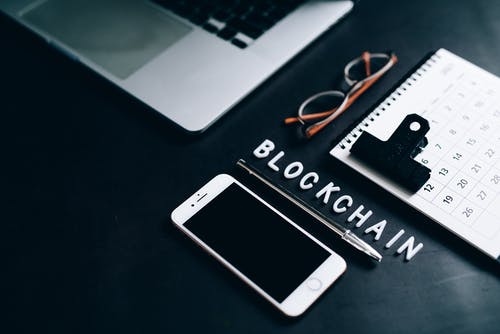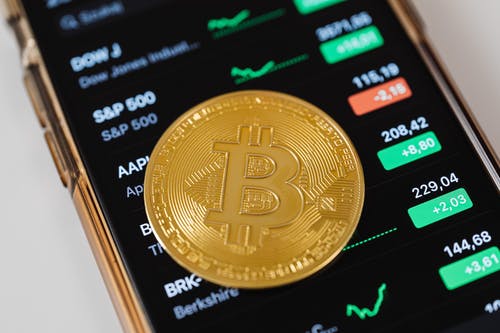Blockchain
A blockchain is a distributed database that is shared across nodes in a computer network. A blockchain is a database that stores data in a digital manner. Blockchains are well recognized for their critical function in keeping a secure and decentralized record of transactions in cryptocurrency systems like Bitcoin. The blockchain’s novelty is that it ensures the accuracy and security of a data record while also generating trust without the requirement for a trusted third party.
A blockchain organizes data into groupings called “blocks,” each of which contains a collection of data. Blocks have specific storage capacity, and when they’re full, they’re closed and connected to the preceding block, producing a data chain known as a “blockchain.” After the freshly added block is filled, all extra information is combined into a new block, which is then added to the chain.
Check: How AR works?
Why is Blockchain important?
Information is the lifeblood of business. The sooner and more precise it is received, the better. Because it delivers instantaneous, shareable, and entirely transparent information kept on an immutable ledger that can only be viewed by permitted network users, blockchain is excellent for delivering that information.

Orders, payments, accounts, production, and much more may all be tracked via a blockchain network. You can see all facts of a transaction end to end since members share a single view of the truth, providing you more confidence as well as additional efficiencies and possibilities.
Key elements of a Blockchain
1. Distributed ledger technology
All network participants have access to the distributed ledger and its immutable record of transactions. Transactions are only recorded once using this shared ledger, reducing the duplication of effort that is common in traditional corporate networks.
2. Immutable records
After a transaction has been logged to the shared ledger, no participant may edit or tamper with it. If a mistake in a transaction record is discovered, a new transaction must be created to remedy the error, and both transactions must be available.
3. Smart contracts
A collection of rules called a smart contract is recorded on the blockchain and performed automatically to speed up transactions. A smart contract can establish corporate bond transfer conditions as well as travel insurance payment terms.
Check: How VR works?
How do Blockchain works?
As each transaction occurs, it is logged as a “block” of data. The movement of a physical (a product) or intangible asset is shown in these transactions (intellectual). The data block may store whatever information you want, including who, what, when, where, how much, and even the state of cargo, such as the temperature.
Each block is connected to the ones before and behind it. As asset transfers from one location to another or ownership changes hands, these blocks create a data chain. The blocks validate the precise timing and sequence of transactions, and they are securely linked together to prevent any block from being changed or inserted between two other blocks.
In a blockchain, transactions are linked in an irreversible chain. Each successive block reinforces the prior block’s verification, and hence the whole blockchain. The blockchain becomes tamper-evident as a result, giving the crucial strength of immutability. This eliminates the risk of manipulation by a hostile actor and creates a trusted record of transactions for you and other network users.
Future of Blockchain
To establish the first genuine idea of digital property, blockchain technology combines encryption and decentralized record-keeping (dubbed “the public ledger”). It’s become The Next Big Thing among technologists, and unlike many prior fads, this one appears to be able to live up to the hype. A blockchain-backed digital asset is a one-of-a-kind. It isn’t possible to copy or move it. It can’t be found on a pirate site, and replicating the file a thousand times won’t make you rich. This is a fun project to work on as money.
It has the potential to completely transform many other sectors. Here are a few examples.
1. Movies, Books, and Music
Entertainment businesses have been fighting to prevent piracy from damaging their economic model since the days of Napster. Before the internet, a firm could sell a record or a movie and know that just one copy had been sold to one individual.
Even if it was feasible to clone a cassette tape, the effort required to do so kept the problem to a minimum. Mixtapes were regarded as a pastime rather than a danger to the company’s business line. Then came the internet, and a single copy of a song could suddenly travel halfway across the world in the time it took to reach the first chorus.
This might be changed by blockchain technology. The RIAA could sign each digital copy of a single piece of music to a single purchaser, in the same manner, that Bitcoin can generate an unreplicable token. The same public ledger system that prevents me from spending your digital currency might also prevent me from playing or reproducing your copy of Nice For What.
2. Governance
Governments may use blockchain in a variety of ways, but we’ll focus on two for now: voting and taxation. Refund theft costs the IRS hundreds of millions of dollars each year when someone takes a taxpayer’s identity and files a tax return in their name.
At the same time, despite the efforts of many activists, the United States continues to oppose any type of online voting system. Critics argue that big government system hacks are a cause to reject digital voting. The risk of someone breaking in and changing an election without anybody knowing is simply too large.
For the same reasons that blockchain enthusiasts believe it can help lock personal identities, proponents of the technology believe it can solve both of these challenges. A public ledger with a unique key might keep track of each citizen’s interactions with the IRS. No one gets the return if the public ID doesn’t show you submitted your taxes. No one gets your vote if it doesn’t state you voted.
3. Real Estate
Any search for real estate ownership that extends back more than 10 or 20 years usually necessitates a trip to a public records facility, where vast volumes document who has owned each plot of property from the town’s establishment. It’s a long and painful procedure to figure out who owns what. It’s significantly more difficult to verify that the record is correct, free of errors or fraud.
This is something that blockchain can help with. The keeping of a public record of transactions is one of the most fundamental uses of blockchain technology. The technology’s primary purpose is to keep track of who owns something and to update that information in the event of a transfer.
For property, this can result in an unhackable, automatically updated record. No one needs to go through large books, and no one has to worry about a lawsuit if a clerk made a mistake 50 years ago. The record is easy to read since it is clear, consistent, and constant.
Current use of Blockchain
As we already know, blocks on the Bitcoin blockchain store information about monetary transactions. More than 10,000 additional cryptocurrency systems are already functioning on blockchains. However, it turns out that blockchain may also be used to store data about other sorts of transactions.
Walmart, Pfizer, AIG, Siemens, Unilever, and a slew of other corporations have already used blockchain technology. The Food Trust blockchain, for example, was created by IBM to trace the journey that food commodities take to reach their final destination.
In the food industry, there have been several outbreaks of E. Coli, salmonella, and listeria, as well as dangerous substances accidentally introduced into meals. It used to take weeks to figure out what was causing these outbreaks or what was causing people to become sick from what they were consuming.
Brands can follow a food product’s journey from its origin through each step it takes, and eventually to its delivery, thanks to blockchain. If a meal is determined to be tainted, it may be traced back to its source via each stop. Not only that, but these firms can now see everything else they’ve come into touch with, perhaps saving lives by allowing the problem to be identified far sooner.
This is one example of a blockchain in motion, but a blockchain may be created in a variety of ways.
1. Banking and Finance
Banking is perhaps the industry that stands to gain the most from incorporating blockchain into its corporate processes. During business hours, financial institutions are only open five days a week. Even if you make your deposit during business hours, it may take one to three days for the transaction to be verified owing to the high volume of transactions that banks must process. Blockchain, on the other hand, is awake all the time.
Consumers may see their transactions executed in as little as 10 minutes by integrating blockchain into banks, which is the time it takes to add a block to the blockchain, regardless of holidays or the time of day or week. Banks may now trade funds across institutions more swiftly and securely thanks to blockchain. Given the scale of the funds involved, even a few days in transit may cost and expose institutions to considerable expenses and dangers.
2. Currency
Bitcoin and other cryptocurrencies are built on blockchain technology. If a user’s bank gets hacked, the client’s personal data is exposed. The value of the client’s money may be jeopardized if their bank fails or if they live in a nation with an uncertain government. Several banks collapsed in 2008 and were bailed out in part using government money. These are the issues that prompted the invention and growth of Bitcoin.

Blockchain lets Bitcoin and other cryptocurrencies function without the need for a central authority by distributing their activities over a network of computers. This not only lowers risk but also removes a lot of the transaction and processing expenses. It can also provide a more stable currency with more uses and a larger network of persons and organizations with whom to do business, both locally and globally, for those in nations with shaky currencies or financial infrastructures.
For people who do not have state identification, using bitcoin wallets for savings accounts or as a means of payment is very important. Some nations may be in the midst of a civil war, or their governments may lack the necessary infrastructure to offer identity. Citizens of such nations may be unable to open savings or brokerage accounts, leaving them with no means of safely storing wealth.
3. Records of Property
If you’ve ever visited your local Recorder’s Office, you’re well aware of how inefficient and time-consuming the process of registering property rights can be. A physical deed is still required to be presented to a government employee at the local recording office, where it is manually put into the county’s central database and public index. Property claims must be reconciled with the public index in the event of a property dispute.
This procedure is not only costly and time-consuming, but it is also prone to human mistakes, with each inaccuracy reducing the efficiency of property ownership monitoring. Scanning papers and hunting down actual files in a local recording office might be obsolete thanks to blockchain. If a deed is preserved and confirmed on the blockchain, property owners may trust that it is correct and permanently documented.
It can be virtually hard to prove ownership of a property in war-torn nations or locations with little to no government or financial infrastructure, and certainly no “Recorder’s Office.” Property ownership dates might be established in a transparent and unambiguous manner if a group of individuals living in such a region is able to use blockchain.
4. Healthcare
Health-care professionals may use blockchain to maintain their patients’ medical records in a safe manner. When a medical record is created and signed, it may be stored on the blockchain, giving patients confirmation and assurance that the record cannot be altered. These personal health records might be encrypted and saved on the blockchain using a private key, guaranteeing that only specific people have access to them.
5. Voting
As previously said, blockchain might be used to help design a new voting system. Voting using blockchain has the power to eliminate election fraud and improve voter turnout, as proved in the November 2018 midterm elections in West Virginia.
Using blockchain in this way would make tampering with votes almost difficult. Blockchain technology will also ensure electoral openness by lowering the number of people required to run an election and giving officials near-instant results. There would be no need for recounts, and there would be no serious risk that the election would be tainted by fraud.
